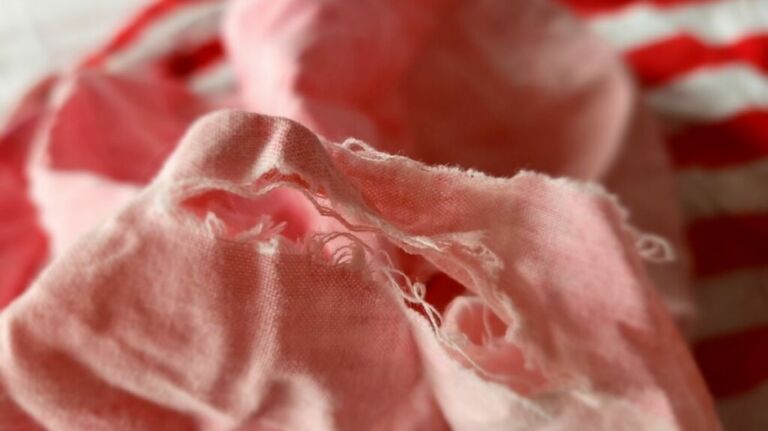The circular economy for textiles is more than just recycling fibers

![]()
In the time of climate change and biodiversity loss, societies must change. This also applies to the production and consumption of textiles. We should move away from the current poor-quality mass production to consume clothes in high quality and in low quantity. We need circular economy for textiles.
Our current way to produce and consume is called a linear economy. It means that we take materials from nature, make products of them, and, after use, the products become waste that is carted to landfills or incinerators. It’s also known as take-make-waste economy. To do this, a lot of new material is needed, which of course exhausts our limited planet. Whereas, in a circular economy, material stays in use for a longer period of time and products that are at the end of their life cycle become material for new products.

Textile waste waiting for recycling. However, the circular economy for textiles is much more complex than just recycling rags. Picture: Eija Valkealahti
A circular economy is often associated with recycling. However, recycling is just one part of a circular economy. We can think of circular economy as different loops. The loops are:
- Sharing, maintaining, prolonging the life cycle
- Reuse
- Refurbishing, remanufacturing
- Recycling as material
As we can see, recycling, which means utilizing the product at raw material level, is only the final loop before using the product in energy production. It’s crucial that the material stays close to the beginning of the loops for as long as possible to maintain its value. For example, clothes should stay in use as clothes for as long as possible.
Design for the whole life cycle of a product plays a crucial part when we want to carry out circular economy in practice. So, it’s not enough to design a product that is visually pleasant and functions well, but we must take the whole value chain of the product into consideration. Starting from sourcing and production to use, repairability, remaking and the recyclability of the material.
Textiles should endure time, use and reuse. They also should be repairable. At the end of the life cycle, textiles should be easily recyclable as materials.
To promote a circular economy we need technological solutions, such as using safe colorants in the production of textiles, and better and more efficient recycling for fibers. Above all, the textile sector needs a wide systemic change where we develop business models according to the circular economy.
Eija Valkealahti
Trainee, Baltic2Hand
References:
De la Motte, H. & Ostlund, A. 2022. Sustainable Fashion and Textile Recycling. De la Motte, H. & Ostlund, A. (Eds.) Sustainable Fashion and Textile Recycling. MDPI, pp. 1–4.
Gherghel, S. 2021. Sustainable Orientation of Textile Companies. Rather, L. J.; Haji, A. & Shabbir, M. (Eds.) Sustainable practices in the textile industry. Scrivener Publishing LLC: pp. 237–252.
Helsingin seudun ympäristöpalvelut HSY n.d. Kiertotalous. Accessed on 25 March 2024.
Kiertotaloudesta kasvua n.d. Kiertotalouden tausta ja tarpeellisuus. Accessed on 20 March 2024.
Vezzoli, C.; Conti, G. M.; Macrì, L. & Motta, M. 2022. Designing Sustainable Clothing Systems. Milano: FrancoAngeli s.r.l.
Weetman, C. 2021. A Circular Economy Handbook. 2nd ed. KoganPage.
These materials were created in the Baltic2Hand project which is an Interreg Central Baltic Programme 2021–2027 project that is co-funded by the European Union. Read more about the Baltic2Hand project.
